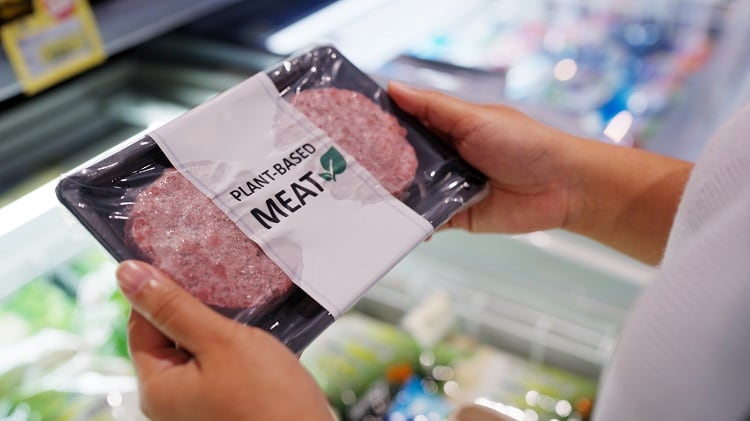Taste remains one of the biggest barriers to ensuring consumers worldwide remain loyal to the meat-alternative category, experts have made clear. Not only that, genuine meat taste and mouthfeel are essential to bagging hardcore meat eaters, Plant Futures founder Indy Kaur told FoodNavigator this week.
Over half (51%) of consumers who tried plant-based meat would not try it again due to its taste, Nourish Ingredients CEO and co-founder James Petrie said, quoting Good Food Institute data.
Why meat alternatives sometimes taste bland
Fats equivalent to those found in animals were critical to a positive experience, especially in meat alternatives, Petrie claimed. “It’s fat that makes food delicious and provides the taste, texture and aroma people love from proteins and dairy,” he continued.
Many companies replace animal fats with commodity ones, such as coconut oil or palm, but they don’t tend to perform in the same way as animal fats.
Petrie, however, claimed to have identified “the most potent fats within meat and dairy” elsewhere in nature using molecular dissection. The process can be scaled up through fermentation to create “climate-resilient and sustainable animalic fats”, said Petrie.

However, the plant-derived fats could also be used to tackle food poverty or affordability through the development of “hybrid meats” that can help in the production of cheaper or more accessible meat products.
Beef stocks are in decline in countries like the US, down 56lbs or 2% per capita compared with 2023 levels, contributing to rising prices, USDA data shows.
How to make animal products go further
“Middle classes around the world are wanting to eat like the west, but there’s not enough [red meat] to go around and over half of consumers don’t like the taste of plant-based food,” Petrie said.
Meat alternatives can be made in higher volumes, more sustainably and often cheaper. Coupled with better-tasting fats, they could satiate demand for real meat at a lower cost.
The theory can be translated into dairy too. “We’re being asked very direct questions by companies [who may be] making three billion cheese slices, but have demand for four billion”, said Petrie.
“We’re then trying to stretch the existing animal food supply further [using our technique] without losing quality or consistency. The result is you get more bang for your cow buck and produce more food that people want to eat.”





